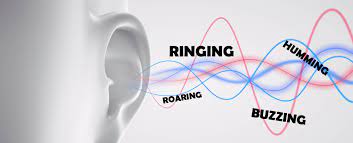
Dry Needling as an Intervention for Tinnitus, Headaches and Neck Pain
Tinnitus, or “ringing in the ears”, affects 10-15% of the population. It is described as an “auditory sensation in the absence of a corresponding external stimulus” or ringing in the ear without a noticeable cause. Causes may be multifactorial, essentially alter the rate of firing for nerves, and resulting in maladaptation over time.

Somatosensory tinnitus occurs when there is dissonance between the somatosensory and auditory systems. Stimulation of these nerves change how the neurons fire, leading to “non-sound driven” sources, altering the perception of loudness in the environment. As mentioned above, the causes may be multifactorial. These include head or neck trauma, bruxism (teeth grinding), change in muscle tension, chronic head/neck or shoulder pain, and association with poor posture.
Cervicogenic somatosensory tinnitus (tinnitus arising from neck related impairments) are associated with neck pain, poor neck flexibility, a change in tinnitus with head or neck movements and neck muscle tenderness.
This article discusses the treatment of a 41 year old female diagnosed with occipital neuralgia. The patient experienced headaches, neck pain and tinnitus after being involved in a car accident 20 years prior. The ringing in the ears was made worse after loud concerts, experiencing stress, the onset of headaches and with prolonged positions (driving).
The patient was previously treated with radio frequency nerve ablation with symptom relief for 6 months. However, the tinnitus returned, and the patient sought treatment by a physical therapist.
The examination demonstrated normal neck movement and strength, but hypersensitivity of the upper and mid-neck muscles, reproducing the headache and tinnitus.
Physical therapy treatment included 12 sessions of thoracic manipulation and dry needling of the neck muscles. The patient reported a significant improvement of symptoms (headaches, tinnitus and neck pain) after treatment and at a follow up 1 year later.
Here are the patients findings. They demonstrate a consistent improvement in symptoms with physical therapy treatment. At the 1 year followup, the patient reported an onset of tinnitus with attending live concerts only.
Conclusion: physical therapy can be an effective treatment for chronic tinnitus, headaches & neck pain. Dry needling, manipulation and exercises, can reduce the adverse events typically seen with medication use. Physical therapy is a safe and effective option for people experiencing headaches, tinnitus and neck pain.